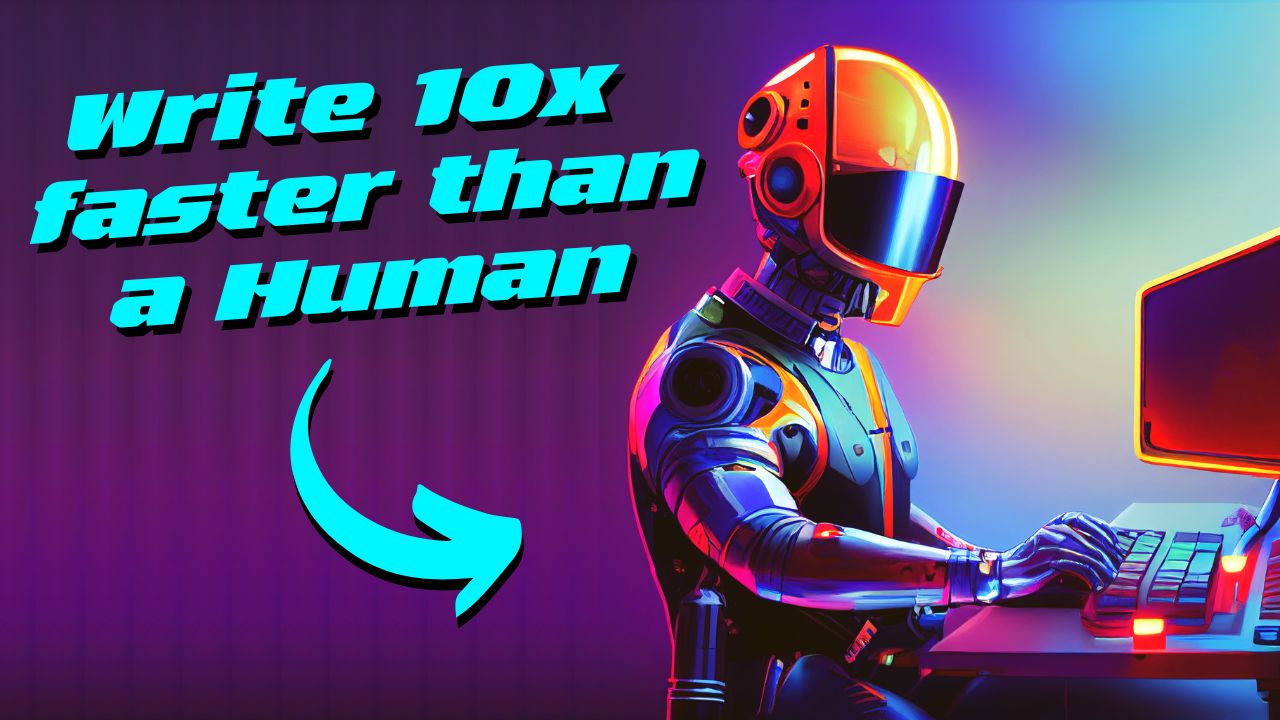Are you struggling to come up with ideas for your next blog post or article? Or maybe you’re just not sure where to start? Either way, you’re in luck!
In this guide, we will show you how to write an article or blog post with the help of GPT-3, an AI tool that can help you generate ideas and content for your writing and to make money online.
With GPT-3, all you need to do is give it a topic, and it will generate a list of ideas and outlines for you to choose from. So if you’re ready to learn how to write an article or blog post with GPT-3, let’s get started looking into this prime example of a use case for a Generative AI model.
Read more or watch the YouTube video:
YouTube:
How to write an article or blog post with AI (GPT-3)?
I always get a lot of questions on how you can write an article or a blog post with AI tools like GPT-3 or other similar large language models. So I decided to make this short but very effective step by step guide on how you can do this with success.
The steps we will cover in this how to write an article or a blog post with AI guide will be:
- Step 1: Finding or identifying your topic to write about
- Step 2: Brainstorm outlines ideas with AI (GPT-3)
- Step 3: Write each outline with AI (GPT-3)
- Step 4: Write a introduction and a conclusion with AI (GPT-3)
- Step 5: Fact check and Spelling check your article / post
With these 5 steps you should be able to write and produce good articles or blog posts with the help of AI tools like GPT-3. This could be further improved with fine-tuning of your GPT-3 model. Let’s dive a bit more into each step.
Step 1: Finding or identifying your topic to write about
Of course before you start writing an article or a blog post, you should probably already know the topic you are gonna write about.
Step 1 of writing an article with GPT-3, you will need to find or identify your topic. To do this, you can brainstorm a list of ideas related to your topic, then narrow it down to the one that you feel is most suitable.
You can also use the GPT-3 playground to help you find relevant information for your topic. Once you have decided on your topic, you can move on to Step 2.
Step 2: Brainstorm outlines ideas with AI (GPT-3)
In Step 2 of this process, you will ask GPT-3 to brainstorm ideas for outlines for your article. These outlines are very important when you are writing an article or a blog post with Generative AI.
You will want to get at least 4 outlines + an introduction and a conclusion, which should total around 700-1000 words.
To do this, you will use the prompt:
Brainstorm blog post outlines ideas for the topic “your topic”:
Once you have received the numbers of outlines you want, it is time to choose which ones you want to use for your article. Consider which ones are most relevant to your topic and will be the most engaging for your readers.
Once you have decided on the outlines you want to use, you can move on to Step 3.

Step 3: Write each outline with AI (GPT-3)
In Step 3, you will start writing for each outline. You will need to decide the structure of the post before asking gpt-3 to start writing.
This is because there might be some relevant information for outline 4 in outline 1, etc. So, you could set it up like this:
Title on Top
Outline 1
Outline 2
Outline 3
Outline 4
Then you will use some prompt engineering to create the prompt:
Write 3 engaging and informative paragraphs about “Outline 1”:
The large language model (GPT-3, BLOOM, etc) you use should understand your structure and write content accordingly.
Repeat this process until you have completed all of your outlines and you are happy with the content.
Step 4: Write a introduction and a conclusion with AI (GPT-3)
Step 4 in writing an article with AI (GPT-3) is to write an introduction and conclusion.
For the introduction, the prompt is:
Write an super engaging introduction from the blog post above
The introduction should be engaging and inviting, enticing the reader to want to read more. It should set up the topics that will be covered in the article.
Before you write the conclusion, always include your introduction in the GPT-3 text.
For the conclusion, the prompt is:
Write a super engaging conclusion from the blog post above
The conclusion should leave the reader feeling satisfied, like they’ve learned something new. It should also include a call to action, or something for the reader to do with the information they’ve learned.

Step 5: Fact check and Spelling check your article / post
The final step in writing an article with GPT-3 is to fact check the content to ensure that it is accurate and helpful. To do this, simply search for key terms and concepts from the article on Google or another search engine.
If any of the information appears to be false or misleading, delete it from the article.
Additionally, it is always a good idea to spell check your content before publishing your AI generated article or blog post on a website or social media.
Conclusion
In conclusion, writing an article or blog post with GPT-3 for beginners is a great way to generate ideas and content for your writing. With GPT-3, all you need to do is give it a topic, and it will generate a list of ideas and outlines for you to choose from.
So if you’re ready to learn how to write an article or blog post with GPT-3, follow the steps in this guide and you’ll be on your way to success!
You can get even better results with the new GPT-3 text-Davinci-003 model!



This is an amazing software, glad to use it in my article writing.
write me a scientific article with 6000 words about Caravanserai in Iran with sources.